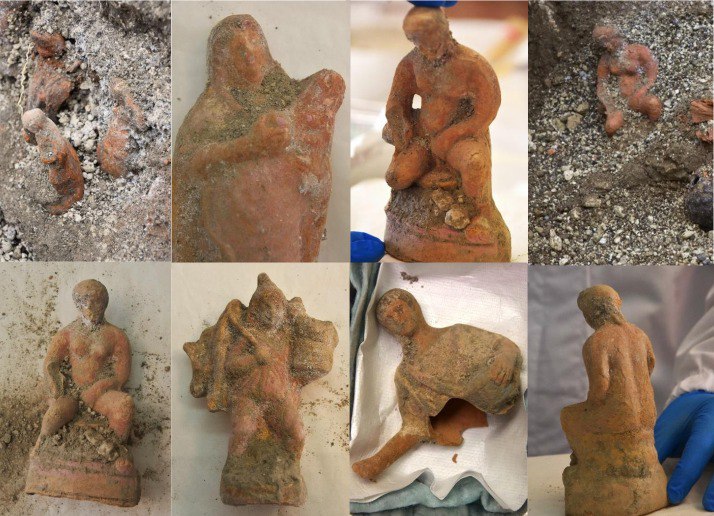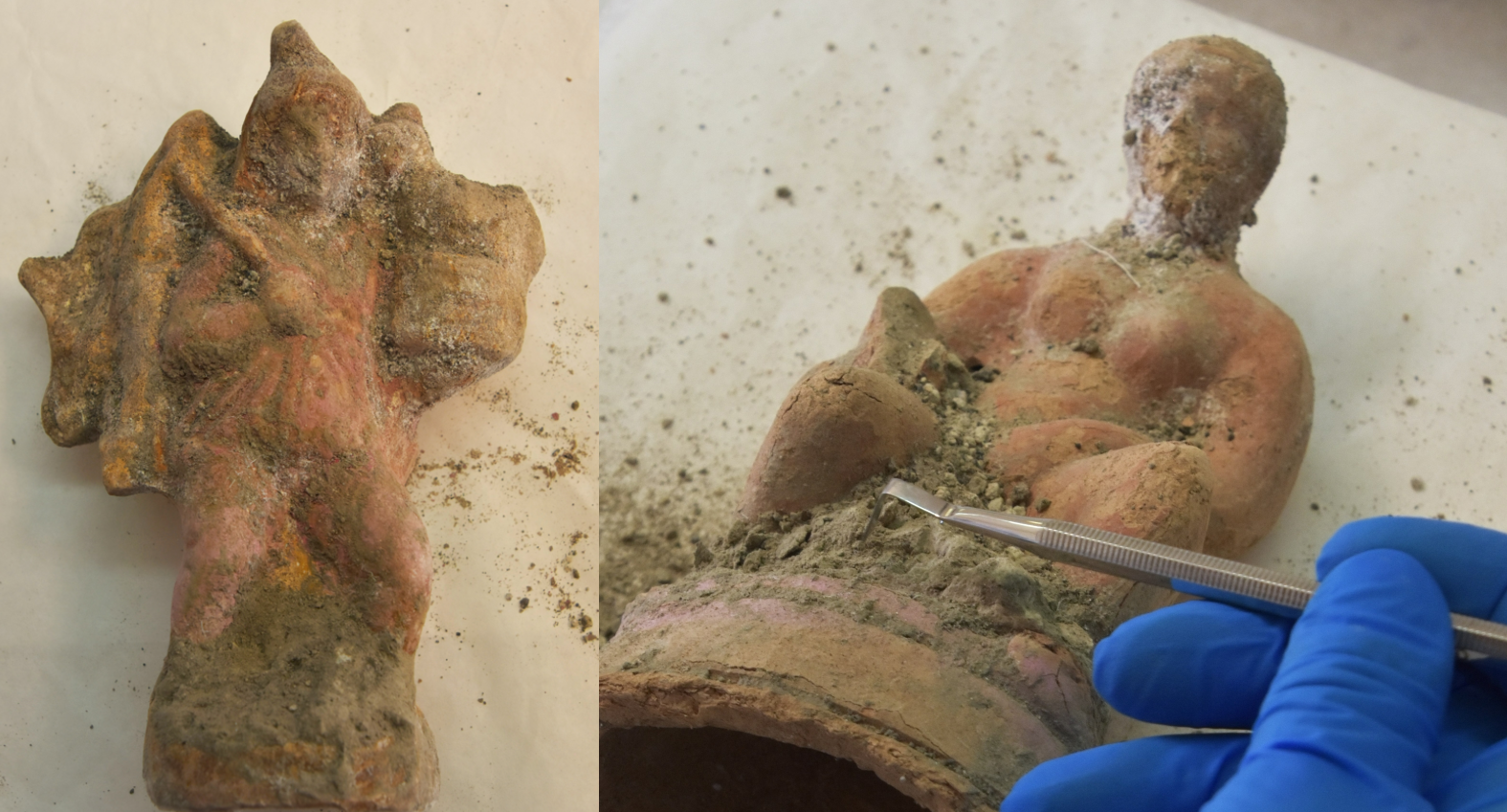From the volcanic rubble of Pompeii, archaeologists have recovered over a dozen mini-statues, some of which may depict a dark and twisted myth that speaks of love, renewal, and the changing of the seasons.
The relics were recently found by researchers from the Archaeological Park of Pompeii within the remains of the House of Leda and the Swan at Pompeii, the ancient Roman city that was destroyed by a violent volcanic eruption nearly 2,000 years ago.
The house, first uncovered by archaeologists between 2018 and 2019 as part of the Great Pompeii Project, was named after an amazingly well-preserved fresco within the villa that depicts a myth in which Zeus takes the form of a swan and rapes Leda, a Spartan queen.
Excavations within this important part of the ruined city are still ongoing – and still producing some stunning discoveries.
The collection of 13 terracotta figurines was recently discovered beneath some 2 meters (6 feet 7 inches) of pumice, the porous volcanic rock that’s created when lava with a very high content of water and gases is spurted out of a volcano.

A collage of the recently discovered figurines unearthed at Pompeii’s House of Leda and the Swan.
Image credit: Archaeological Park of Pompeii
Researchers suspect that some of the figures may depict the myth of Cybele and Attis. This strange and wonderful story has its roots in the Phrygian culture of Anatolia, modern-day Turkey, although it also held some significance in ancient Greek and Roman culture.
There are several retellings of this tale, but here’s how one of them goes: Cybele, a powerful and motherly goddess associated with fertility and nature, falls in love with a handsome young man named Attis. However, Attis becomes enamored with another, driving Cybele into a jealous rage. Her fury sends Attis into madness, causing him to castrate and kill himself under a pine tree.
Consumed by remorse, Cybele then convinces the gods to transform Attis into a pine tree surrounded by violet flowers, allowing him to live forever. This is often interpreted as an allegory for the cyclical nature of life, rebirth, and the renewal of the planet’s seasons.

Do these figurines depict Cybele and Attis?
Image credit: Archaeological Park of Pompeii
While the Greco-Roman world was filled with bizarre tales of tragedy like this, the reality of Pompeii is perhaps even more dramatic than fiction.
The ancient Roman city was annihilated when the volcano Mount Vesuvius erupted in 79 CE, killing thousands of people in the settlement and the nearby towns of Herculaneum, Oplontis, and Stabiae. The eruption showered the region with over 6 meters (19 feet) of ash and other volcanic debris. Devastating as it was, it preserved the settlements for centuries, providing modern-day excavators with a wonderfully clear insight into the daily life of ancient Romans.
Pompeii is perhaps best known for its iconic stone bodies that appear to show the city’s inhabitants amid their grisly deaths. However, these objects aren’t actually petrified remains from ancient times, but a work of archaeological ingenuity from the 19th century.
Source Link: Pompeii's Ruins Reveal 13 Figurines Telling A Dark And Twisted Myth